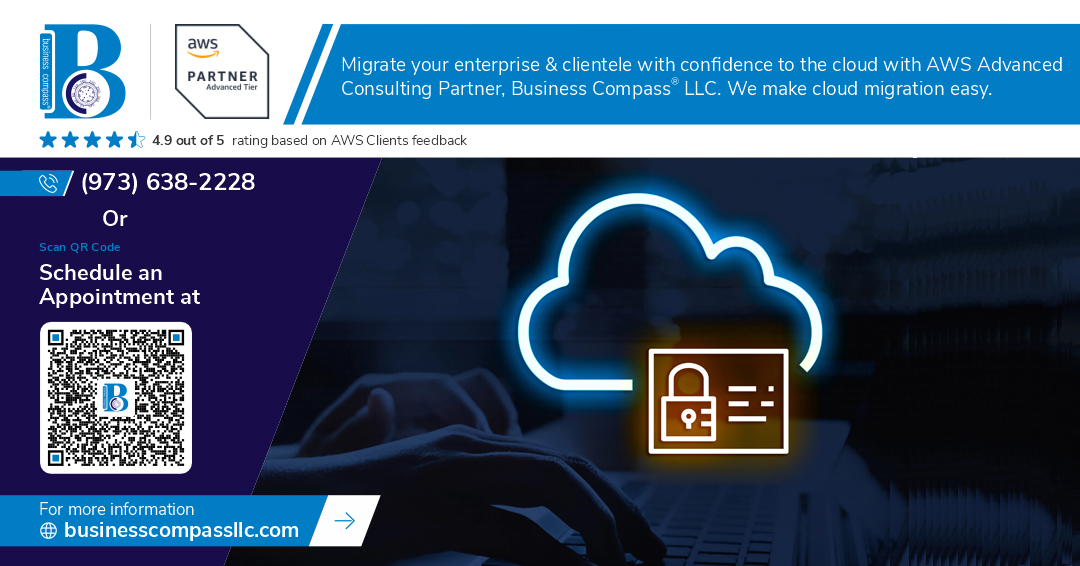AWS IAM access control problems can turn your day into a debugging nightmare. One minute your application works perfectly, the next you’re staring at access denied errors that seem to make no sense.
This guide is designed for cloud engineers, DevOps professionals, and AWS administrators who need to get their IAM policy configuration right the first time. You’ll learn how to prevent IAM access issues before they happen and fix them quickly when they do.
We’ll walk through crafting effective identity-based policies that give users exactly the permissions they need without opening security holes. You’ll also discover how to optimize resource-based policy configuration to work seamlessly with your existing setup. Finally, we’ll cover systematic approaches to troubleshooting access denied errors so you can stop guessing and start solving problems fast.
Stop letting AWS permission management slow down your deployments. Let’s dive into the practical strategies that will make your IAM policies work reliably every time.
Understanding AWS IAM Access Control Fundamentals
Distinguish Between Identity-Based and Resource-Based Policies
Identity-based policies attach directly to users, groups, or roles, defining what actions they can perform on which resources. Resource-based policies attach to AWS resources like S3 buckets or KMS keys, specifying who can access them. Identity policies control what a principal can do, while resource policies control who can access a specific resource. Both policy types work together in AWS IAM access control decisions.
Recognize How Policy Evaluation Logic Determines Access
AWS evaluates policies using a deny-by-default approach where explicit deny statements always take precedence. The system checks identity-based policies, resource-based policies, and permission boundaries to determine final access. If any policy explicitly denies an action, access is blocked regardless of allow statements elsewhere. Multiple allow statements from different policy types can grant access when combined.
Identify Common Policy Conflict Scenarios
Policy conflicts often arise when identity policies grant permissions but resource policies deny them, or vice versa. Cross-account access frequently creates confusion when both accounts need proper policy configuration. Permission boundaries can unexpectedly block actions even when other policies allow them. Wildcard statements in policies can accidentally grant or deny broader access than intended, creating security gaps.
Leverage Policy Simulator for Testing Access Permissions
The AWS Policy Simulator helps test policy configurations before deployment, preventing IAM access issues. You can simulate specific actions against resources to see if access would be granted or denied. The tool shows which policies are being evaluated and why access decisions are made. Regular testing with the simulator catches policy conflicts early and validates AWS security best practices.
Crafting Effective Identity-Based Policies
Structure Policies Using Least Privilege Principles
Start with zero permissions and add only what users absolutely need to do their job. This approach reduces your attack surface and prevents accidental data exposure. Begin with specific resources rather than broad permissions, then gradually expand scope only when business requirements demand it. Test policies in development environments first to catch overly restrictive configurations before they impact productivity.
Implement Conditional Logic for Enhanced Security Control
Conditional statements in AWS identity-based policies add powerful security layers without complicating user workflows. Use IP address restrictions to limit access from trusted networks, time-based conditions for temporary access, and MFA requirements for sensitive operations. The DateGreaterThan and IpAddress conditions are particularly effective for controlling when and where users can access your AWS resources.
Avoid Overly Permissive Wildcard Usage
Wildcards (*) in IAM policy configuration can create massive security holes when used carelessly. Replace broad wildcards with specific resource ARNs or use prefix matching for related resources. Instead of s3:* on all buckets, specify exact bucket names or use patterns like arn:aws:s3:::company-data-* to maintain flexibility while limiting scope. Review existing policies regularly for unnecessary wildcard usage.
Organize Policies Using Groups and Roles Instead of Direct User Attachment
Direct user policy attachments create management nightmares as your team grows. Create logical groups like “Developers,” “DataAnalysts,” or “SecurityTeam” with appropriate permissions, then add users to these groups. For cross-account access or service integrations, roles provide cleaner permission management than copying policies across multiple users. This structure makes AWS permission management scalable and reduces the risk of IAM access issues during team changes.
Optimizing Resource-Based Policy Configuration
Configure Cross-Account Access Without Compromising Security
Resource-based policies enable secure cross-account access by specifying external AWS accounts in the Principal element while maintaining strict condition blocks. Include specific IP restrictions, MFA requirements, and time-based access controls to prevent unauthorized usage. Always validate external account IDs and implement least-privilege permissions to minimize security risks while enabling necessary cross-account functionality.
Set Appropriate Resource-Level Permissions for Services
Different AWS services require tailored resource-based policy approaches for optimal security and functionality. S3 bucket policies should specify exact object paths and actions, while Lambda function policies need precise source ARNs for event triggers. KMS key policies require careful management of key usage permissions, and SNS topic policies should restrict subscription and publishing rights to authorized principals only.
Prevent Unintended Public Access Through Policy Review
Regular AWS resource-based policy audits catch dangerous wildcard principals (*) and overly permissive conditions that could expose resources publicly. Use AWS Config rules and Access Analyzer to automatically detect risky configurations. Review bucket policies, API Gateway resource policies, and Lambda permissions quarterly. Remove unnecessary public read access and replace broad permissions with specific account IDs or organizational units for better AWS IAM access control.
Troubleshooting Access Denied Errors Systematically
Decode IAM Policy Evaluation Flow for Faster Resolution
AWS IAM policy evaluation follows a predictable sequence that can help you pinpoint access denied errors quickly. The system evaluates explicit denies first, then checks for explicit allows in identity-based policies, resource-based policies, and permission boundaries. Understanding this evaluation order helps you identify whether the issue stems from missing permissions, conflicting deny statements, or restrictive boundaries.
Use CloudTrail Logs to Identify Permission Bottlenecks
CloudTrail logs provide detailed insight into AWS access denied errors through the errorCode and errorMessage fields in API call records. Search for “AccessDenied” events to see exactly which actions failed and which resources were involved. The sourceIPAddress and userIdentity fields help you confirm whether the request came from the expected source, while the requestParameters show what permissions were attempted.
Apply Policy Boundary Concepts to Resolve Complex Access Issues
Permission boundaries act as maximum permission filters that can cause unexpected access denials even when identity-based policies grant access. Check if users or roles have boundaries attached by examining the PermissionsBoundary field in IAM. Common issues arise when boundaries don’t include required actions or when they’re too restrictive for service operations. Remove or expand boundaries to test if they’re causing the access problem.
Validate Service-Linked Role Requirements
Service-linked roles require specific trust relationships and permissions that AWS services expect to function properly. Verify that service-linked roles haven’t been modified or deleted, as this causes immediate access failures. Check the AWS documentation for each service to confirm required permissions match the current role policy. Some services create these roles automatically, while others require manual creation with precise configurations.
Implementing Monitoring and Maintenance Best Practices
Set Up Automated Alerts for Suspicious Access Patterns
CloudTrail and CloudWatch work together to create a robust monitoring system for your AWS IAM access control. Configure alerts for failed login attempts, unusual API calls from new IP addresses, or privilege escalation attempts. Set up SNS notifications when users access resources outside their typical patterns or when service accounts exhibit unexpected behavior. Monitor for bulk policy changes or when someone creates new IAM users with elevated permissions. These automated alerts help you catch potential security breaches before they escalate.
Conduct Regular Policy Audits to Remove Unused Permissions
AWS Access Analyzer becomes your best friend for identifying unused permissions across identity-based policies and resource-based policies. Run monthly audits to discover policies that haven’t been used in 90 days or longer. Check for overly broad permissions like “s3:*” when users only need read access. Remove inactive users and roles, especially temporary ones created for specific projects. Use IAM credential reports to identify users who haven’t logged in recently. This proactive approach to AWS permission management reduces your attack surface significantly.
Track Policy Changes Using Version Control Methods
Treat your IAM policies like code by storing them in Git repositories with proper branching strategies. Use AWS Config to track policy modifications and maintain detailed change logs. Implement approval workflows through pull requests before deploying policy updates to production. Tag your policies with version numbers and deployment dates for easy tracking. Consider using infrastructure-as-code tools like Terraform or CloudFormation to manage policy deployments. This systematic approach to IAM monitoring and maintenance ensures you can quickly rollback problematic changes and maintain audit trails for compliance requirements.
Getting your AWS IAM policies right can feel like solving a puzzle, but the pieces are straightforward once you know what you’re looking for. Strong identity-based policies give your users exactly the permissions they need, while well-crafted resource-based policies act as your second line of defense. When these work together with proper troubleshooting skills, you’ll spend less time chasing down mysterious access denied errors and more time focusing on what matters most.
Don’t let IAM management become an afterthought in your AWS environment. Start by auditing your existing policies, set up CloudTrail logging to catch issues early, and create a routine for reviewing permissions regularly. Your future self will thank you when that critical deployment doesn’t fail because someone couldn’t access the S3 bucket they needed. Take control of your IAM setup today and turn what used to be a headache into a competitive advantage for your team.




















